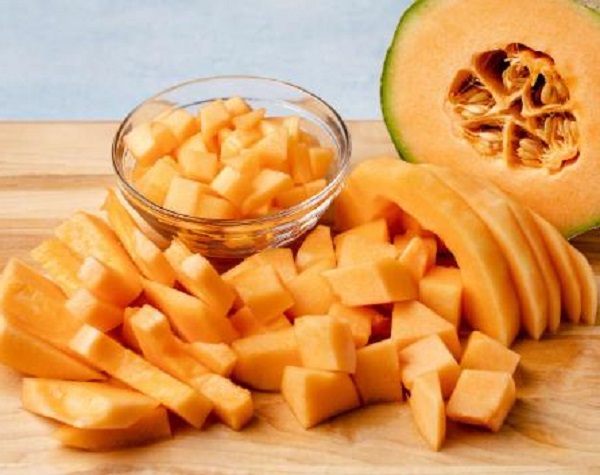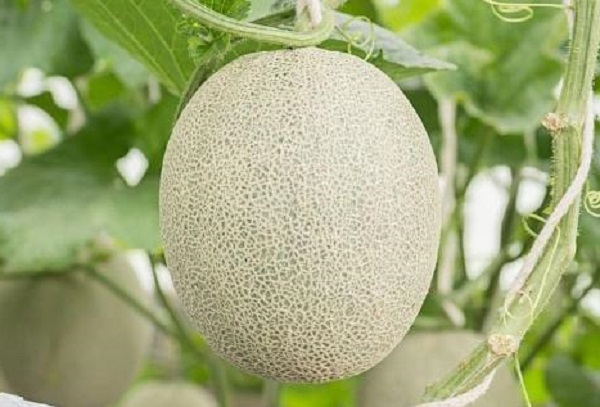Discovering whether can dogs eat cantaloupe is a common query for pet owners. In this comprehensive guide, we delve into the nuances of including cantaloupe in your dog’s diet. While this refreshing fruit is rich in water and nutrients for humans, it’s crucial to navigate moderation and understand your dog’s digestive capacity. Learn how to incorporate cantaloupe safely, the appropriate portions, and what precautions to take if your furry friend exhibits any adverse reactions. Ensure your dog enjoys this fruity treat without compromising their well-being with our detailed insights.

Can Dogs Eat Cantaloupe?
When given in moderation, cantaloupe may be a safe and healthful addition to your dog’s diet. Cantaloupe is a nutrient-dense, low-calorie food with a high water and fiber content that may be beneficial to your pet.
But you must use care while giving your dog any new food. To determine how they respond and make sure there are no allergies or digestive problems, it is advised to start with tiny dosages. Cantaloupe has a lot of nutrients, but moderation is key. A little amount might be a delightful and harmless treat for your dog, but too much can cause issues.
It’s wise to speak with your veterinarian if you have any worries or inquiries about feeding cantaloupe to your dog. In order to ensure that your dog has a happy and healthy treat experience, they may provide tailored guidance based on your dog’s unique health requirements.
Are melons good for dogs?
Now that you know that dogs can eat melons, you may be wondering what advantages this fruit can have for them.
Melons are a great source of fiber, vitamins A and C, and many B vitamins, among other important components. Melons are high in water content (around 90%), which makes them a great source of needed hydration, especially during the summer. It is important to remember, however, that dogs should ideally get all the nutrients they need from their normal dog diet, so they won’t need to rely on human snacks like melons . See our in-depth page on dog nutrition for more information on how to keep your dog’s food balanced.
Hazards to consider before giving cantaloupe to dogs
Risks to Take Into Account Before Giving Dogs Cantaloupe
- Sugar Content and Diabetic Concerns: Dogs with diabetes or those following calorie-restricted diets should not eat cantaloupe due to its high sugar content. Consuming too much sugar might raise blood sugar levels and make pre-existing medical issues worse.
- Risk of Canine Obesity: Cantaloupe, like many other treats, may lead to obesity in dogs. This is especially important for dogs that have joint problems, such hip dysplasia, since being overweight may make these conditions worse.
- Potential for Gastrointestinal Distress: If dogs eat excessive quantities of cantaloupe, the fruit’s relatively high fiber content puts them at risk for gastrointestinal distress. Digestive disorders such as vomiting and diarrhea may be the result of this.
- Possible Allergy Reactions or Intolerance: Just like people, dogs may have certain dietary allergies or intolerances. When introducing cantaloupe to your dog for the first time, keep a watchful eye out for any indications of an allergic response, including swelling, itching, or upset stomach.
- Choking Hazard from Rinds: The fibrous and rough rinds of cantaloupe, like those of watermelon, may cause choking hazards and obstructions in the gastrointestinal tract if swallowed. It’s essential to remove the rind before giving your dog any cantaloupe.
- Monitoring for Adverse Effects: After giving your dog some cantaloupe, keep a close eye out for any negative reactions, such as vomiting, diarrhea, appetite loss, lethargy, or symptoms of gastrointestinal pain. Consult a veterinarian right once if any of these signs appear.
- Feeding Guidelines: Don’t serve too much cantaloupe at once; instead, serve little portions in moderation. To further reduce any risks, always chop the fruit into tiny, bite-sized pieces and remove the skin.
How to Provide Your Dog with Cantaloupe
Cantaloupe, like other fruits, has to have its exterior properly cleaned before cooking. Remove the rinds and seeds, then slice the melon into thin wedges, about an inch to two inches thick; the size will vary depending on the size of your dog.

Give your dog cantaloupe as a treat once in a while instead of making it a staple of their diet. Put the reward inside a Kong or other puzzle toy to make the experience even better and stimulate your mind. Freeze the fruit for a long-lasting, refreshing treat, especially during hot weather.
Although cantaloupes are available year-round, summer is when their sweetness and freshness are at their best. Choosing a ripe cantaloupe makes your dog’s reward even better. Remember that cantaloupes have a greater sugar content the more ripe they become. If a cantaloupe tastes sweeter than normal, you should give your dog a lesser slice. You may find out by doing a quick taste test.
How to Ensure You Always Choose Ripe Cantaloupe

To make sure you choose ripe cantaloupe every time, do the following actions:
- Verify the hue: Choose cantaloupes that are entirely orange in color, devoid of any hints of gray. The color has to be consistent and vivid.
- Examine the underside: By turning the cantaloupe over and looking underneath. It indicates ripeness if it has a yellowish tint.
- Take a whiff of the cantaloupe: It should smell sweet and unique. If there’s a fragrance of perfume, check at the stem end.
- Use little pressure: Lightly press the region around the fruit’s center. It is ripe when it gives slightly and feels soft.
- Examine the bloom end; it should feel heavier than the remainder of the fruit. Ripeness is indicated by firmness at the end of the bloom.
Conclusion
Dogs can enjoy cantaloupe as a tasty and hydrating treat, provided it’s served in moderation and without seeds or rind. Always introduce new foods slowly and consult your vet to ensure it aligns with your dog’s health requirements. With caution, sharing cantaloupe can be a wholesome addition to your dog’s diet.
